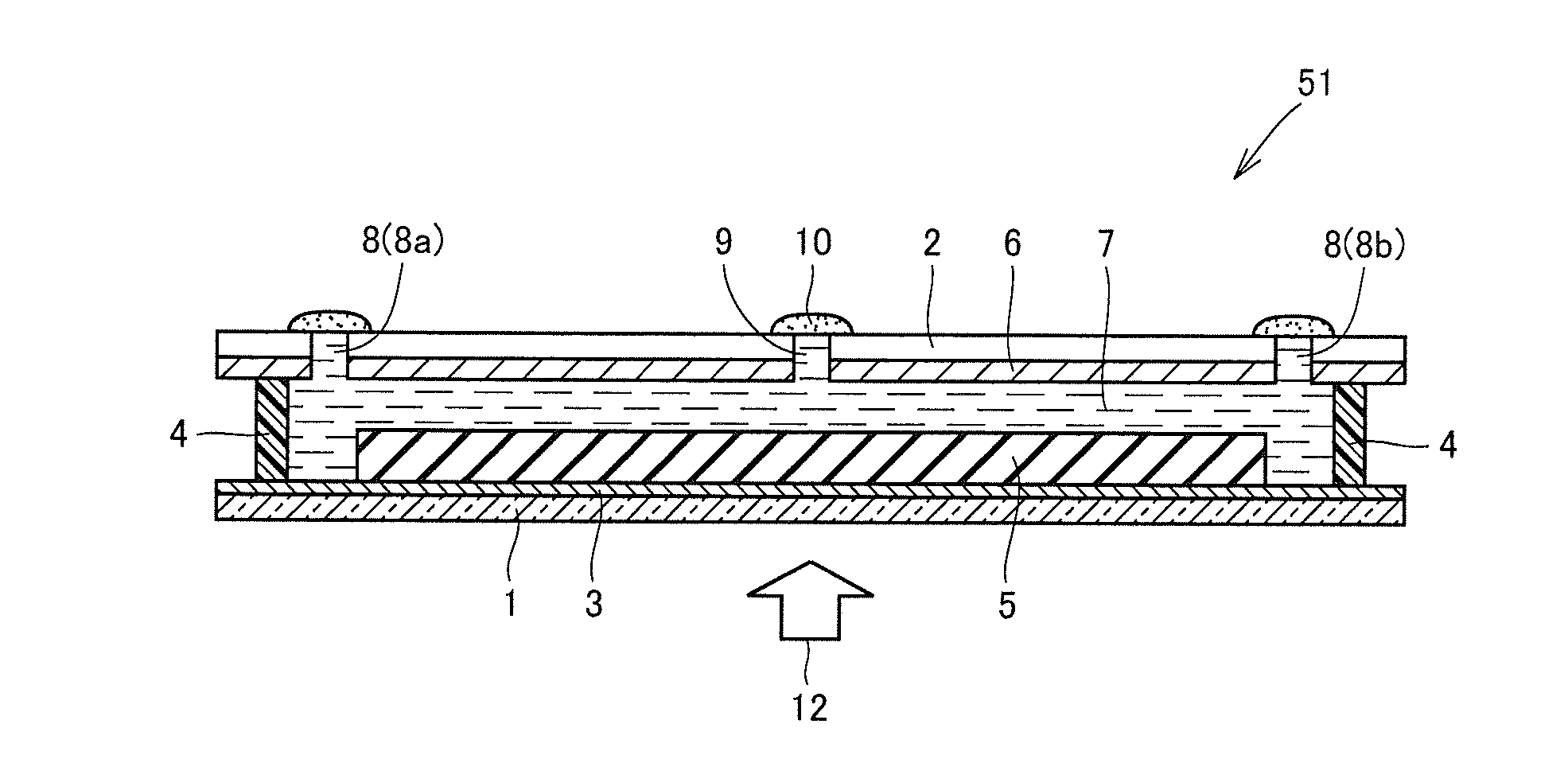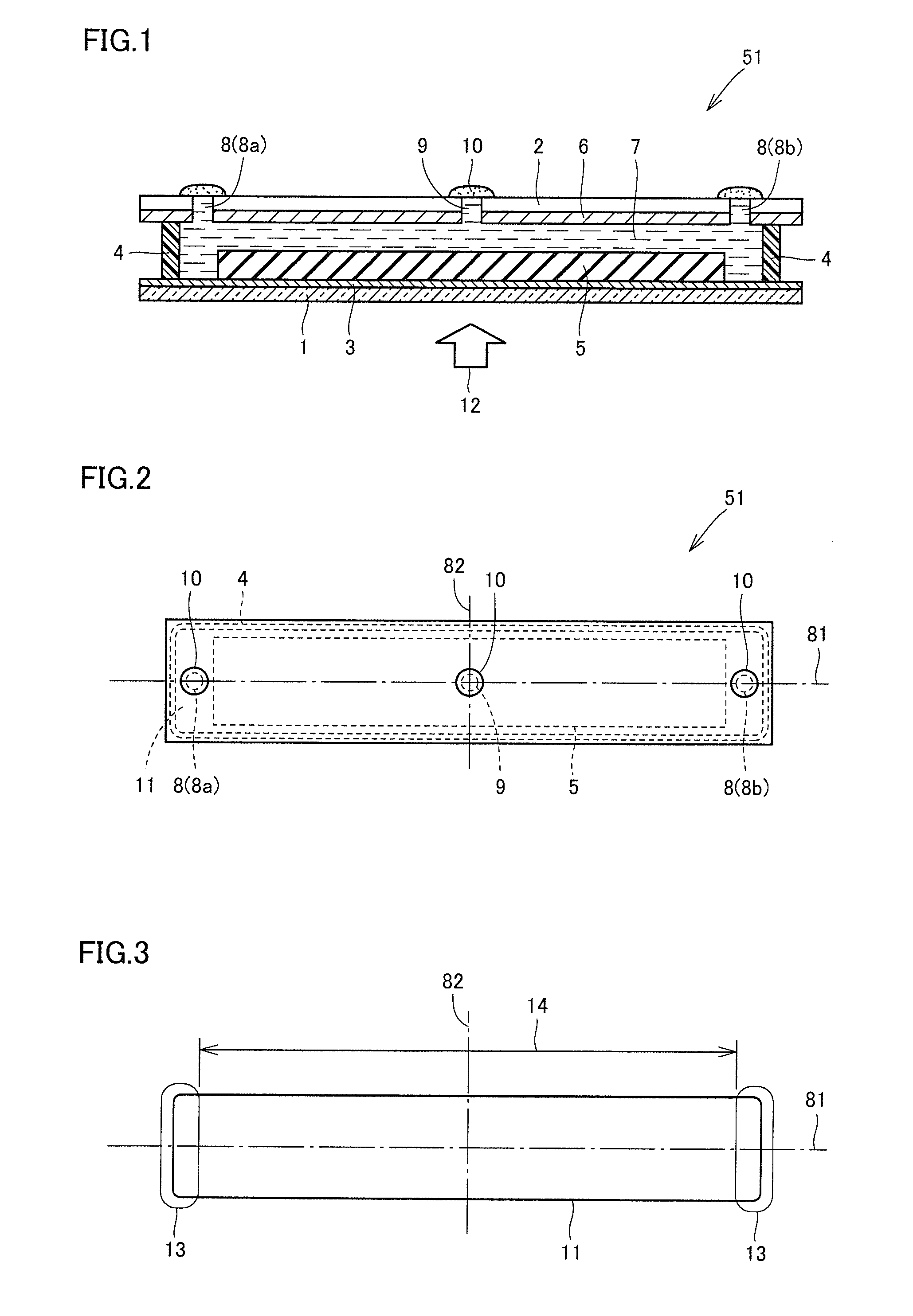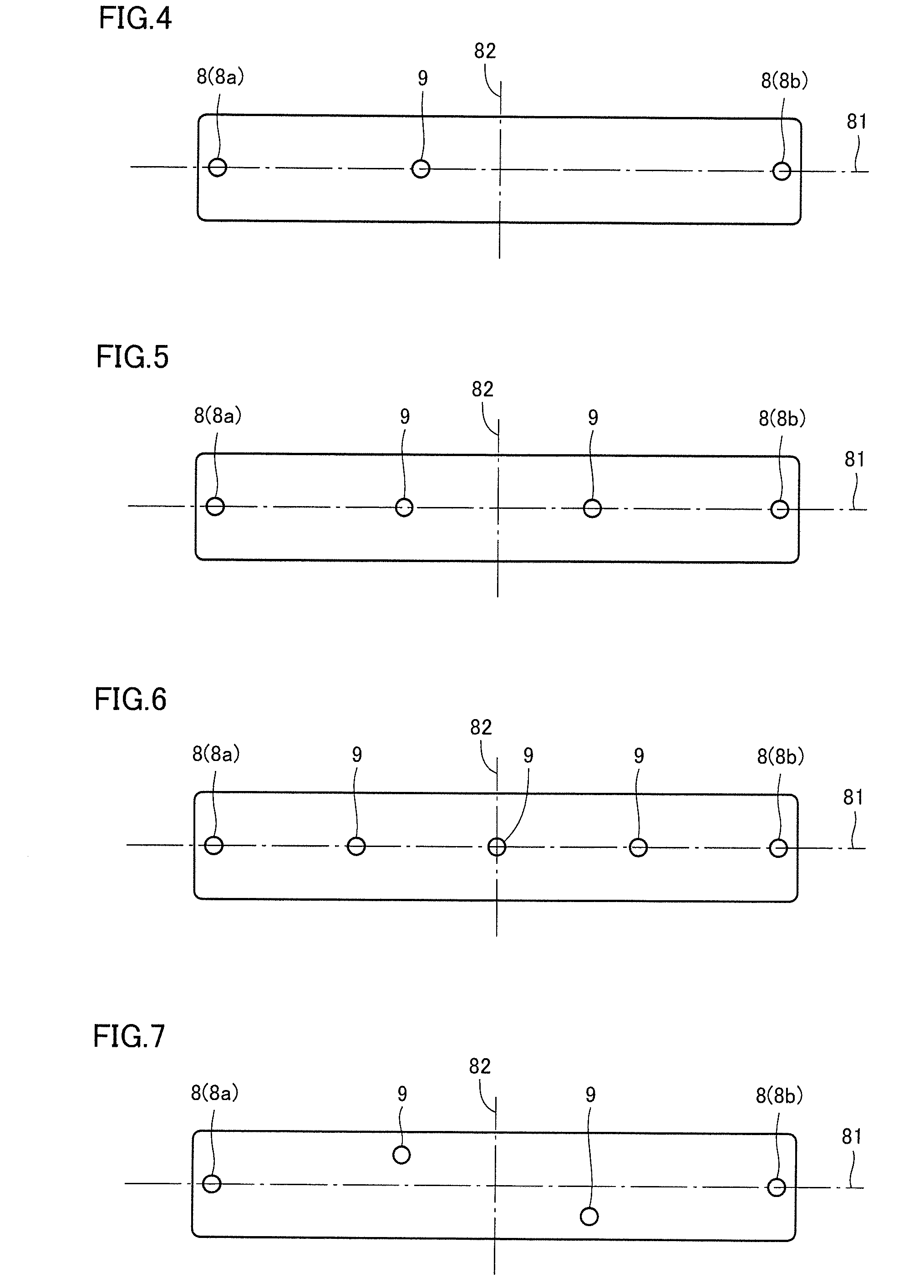Solar cell and solar cell module
a solar cell and solar cell technology, applied in the field of solar cell and solar cell module, can solve the problems of high silicon substrate production cost, rise in production cost, and inability to solve the problems described above, so as to reduce the time required for introducing electrolyte solution, reduce the pressure efficiently, and facilitate the effect of sufficient electrolyte solution permeation all over the solar cell
- Summary
- Abstract
- Description
- Claims
- Application Information
AI Technical Summary
Benefits of technology
Problems solved by technology
Method used
Image
Examples
first embodiment
[0039]Referring to FIG. 1 and FIG. 2, a solar cell in a first embodiment according to the present invention will be described. A section view of the solar cell in the present embodiment is shown in FIG. 1, and a plan view Of the solar cell is shown in FIG. 2, A solar cell 51 is a wet solar cell. Solar cell 51 includes a light transmissive substrate 1, a supporting substrate 2 disposed parallel with light transmissive substrate 1, a photoelectric conversion part 5 and a counter electrode 6 that are disposed between light transmissive substrate 1 and supporting substrate 2 in such a manner that they are spaced from each other, an electrolyte part 7 disposed between light transmissive substrate 1 and supporting substrate 2 while being in contact with photoelectric conversion part 5 and counter electrode 6, and a sealing part 4 that surrounds and seals electrolyte part 7 in such a manner that electrolyte part 7 is retained within an electrolyte disposition region 11 that is a region def...
second embodiment
[0107]Referring to FIG. 10 and FIG. 11, a solar cell module in a second embodiment according to the present invention will be described. The solar cell module according to the present invention is a solar cell module including the configuration where a plurality of solar cells including at least one solar cell are connected as is mentioned above. That is, not all of the connected plural solar cells need to be the solar cell as described above, and it suffices that at least one of the solar cells is the solar cell as described above. All of the solar cells may be the solar cell as described above. The connected solar cells are electrically connected in series.
[0108]FIG. 10 schematically shows a solar cell module 501 in the present embodiment.
[0109]In configuring solar cell module 501, a plurality of strip-like solar cells 51 are assembled, and arranged in parallel so that the long sides of individual solar cells 51 mutually contact with each other and connected. FIG. 11 is a section ...
examples 1 to 5
[0114]As a solar cell according to the present invention, a pigment-sensitized solar cell was fabricated. The production method will be concretely shown below. The pigment-sensitized solar cell has a structure shown in FIG. 1 and FIG. 2. However, the number of second openings 9 is not limited to that shown in FIG. 1 and FIG. 2. In examples, for the purpose of comparison, plural kinds of solar cells were fabricated while the arrangement density of second openings 9, namely the value of N as will be described later was varied.
[0115]First, as a support formed with the conductive layer, two glass substrates with a SnO2 film available from Nippon Sheet Glass Co., Ltd. were prepared. This is a glass substrate formed with a SnO2 film which is a transparent conductive layer on one face. Of these two substrates, one is to serve as light transmissive substrate 1 and transparent conductive film 3 in FIG. 1, and the other is to serve as supporting substrate 2 and counter electrode 6. The combin...
PUM
 Login to View More
Login to View More Abstract
Description
Claims
Application Information
 Login to View More
Login to View More - R&D
- Intellectual Property
- Life Sciences
- Materials
- Tech Scout
- Unparalleled Data Quality
- Higher Quality Content
- 60% Fewer Hallucinations
Browse by: Latest US Patents, China's latest patents, Technical Efficacy Thesaurus, Application Domain, Technology Topic, Popular Technical Reports.
© 2025 PatSnap. All rights reserved.Legal|Privacy policy|Modern Slavery Act Transparency Statement|Sitemap|About US| Contact US: help@patsnap.com



